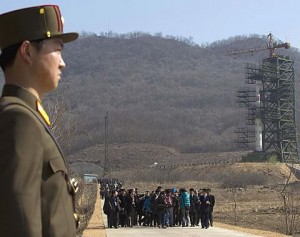NBC News space analyst, James Oberg, will be attending the launch of North Korea’s latest controversial satellite launch in person. As he points out, though, it will be shortwave radio listeners who first verify the success of the launch:
(Source: MSNBC)
The history of the first two North Korean satellite missions is also a heavy burden for the current campaign for “transparency.” That’s because, despite Pyongyang’s persistent insistence that both satellites were successfully placed in orbit, no sign of them has been detected by anyone in the Western world. No glint of reflected sunlight, no beep-beep of radio calls, no “bogey” blip of radar return. Nothing.
I do not expect any official revision of those old claims. What’s past is past. But the current promises of a renovation in public disclosure policy could be a sign that positive changes are ahead.
Probably the most critical move to establish credibility, aside from our visits, is to allow other outside observers to detect and subsequently announce their own of the satellite to be launched this week. And that could happen, with or without the North Koreans’ consent.
Far more authoritative than anything we report will be the post-launch detection of the satellite’s radio beacon by amateur radio operators in the outside world. Short-wave listeners are ideally placed to pick up such signals — first in Australia, and then along the west coast of South America, and finally up the east coast of North America. Only then will North Korea have its first chance to catch a fleeting signal, unless it managed an extremely long-range radio reception immediately after launch.
Read the full article at MSNBC.
Know the frequency? Please comment and I will update this page.

